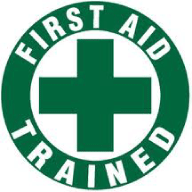Patch Lining In Shrewsbury
Having The Ability To Target And Repair Specific Joints And Defects On A Drainage Or Sewer System Has Several Benefits.
Drain patch lining repairs, localised drain liners, spot repairs
Drain patch lining is the chosen method of repair within a section of the drainage system. Patch lining is generally recommended when there is an isolated defect that needs attention, or if a number of defects occur over a short distance. Patch lining also provides additional benefits:
-
- 1. It provides a fix with minimal disruption for customers
- 2. Short repair times as the patch seals
- 3. Minimal disruption to public highways & railway lines that would likely have been shut when using traditional methods
- 4. It’s cost-effective & durable
Drain patch lining usage examples
Firstly if you have a 30 metre run of 150mm pipework between manholes with root ingress to one joint in the middle of the line you can root cut and repair that one affected joint using a drain patch repair. Now any contractor will tell you that if you seal that one joint the roots will attack the next available joint and therefore it would be prudent to reline the whole section, but insurance companies do not pay out for preventative maintenance so they are happy for the quick fix of the patch liner repair.
If you are funding the works yourself and a rogue joint halfway down the gable end of your property is allowing water loss into the cellar then in contrast why reline 20 metres when we can seal the one open and leaking joint saving both time and money.
Similarly, if there are several connections or junctions onto a run of drainage traditional drain lining would mean a full reline and then using a robotic cutter to re-open lateral connections, with patch liner repairs you can easily repair joints and defects between connections without excavation or robotic cutting, given adequate access.
From a contractors point of view, drain patch lining gives a more accurate approach to sealing joints adjacent to live junctions or on the last joint prior to a connection onto the main sewer as the stretch and shrinkage associated with traditional pipelining prohibits such pinpoint accuracy, another benefit is having the ability to repair joints beyond earlier traditional drain lining repairs because as predicted the tree roots have worked their way down the system and caused further problems.
Drain patch case study
As an example of the benefit of a drain patch repair, we were involved on a site where a single track access road serving 90 + properties had approximately 15 root damaged joints over a 100-metre section of sewer running beneath it. Excavation and repair of the 3-metre deep drain was a non-starter as this would have closed the road off completely, as would traditional lining as each of the five chambers on the road would have to be open for a minimum of two or three hours while the sewer liners cured, several lateral connections would also require robotic cutting.
We were able to target the 15 defective drain joints individually with the equipment required sitting comfortably in the manholes during the curing process, this meant that at any one time we were able to maintain the flow of traffic through the site, and talking of flow the packer used to inflate the drain patch repair was a flow-through unit so there was no need for over-pumping or bunging off the system.
Now in the long term, we can guarantee that the root ingress will occur in the remainder of the joints on the system, this could take five years or twenty years but all parties concerned were happy, the residents’ committee at the site had been told by previous contractors that there was no easy fix and major disruption would ensue, the insurers who paid for the job paid out for defective drain joints only and did not have to pay for preventative maintenance.
False economy? Almost certainly but in twenty years time, it will be a different committee chairman dealing with a different insurer but that`s a topic for another page.
Drain patch repair methodology
Unlike traditional CIPP Lining where we use a pre-shaped and sized tube of the liner the material used for a drain patch repair comes in a square or patch, hence the name. The patch is spread out and impregnated using an epoxy resin before being wrapped around a pipe packer, the pipe packer is then inserted into the drain or sewer up to the point of the defect before being inflated. After an hour or so the resin cures, the packer is removed and bingo. Job done.
The patches come in different lengths from 500mm to 2000mm dependent on the pipe size with the packer diameters going up to 1000mm.








